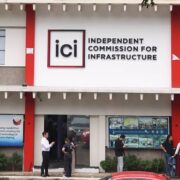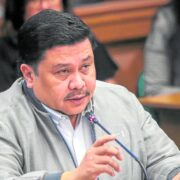How much land does a man need?

A trip to Nueva Ecija, all alone and by bus, had me nervous. The task at hand was to gather information: to survey cargo going southward coming from the Cagayan River basin and its fertile floodplains; an infrastructure project, one that could potentially transform the province, is in the works. There was an awful lot of walking, intruding on other people’s day to ask for directions—heavily relying on the kindness of strangers—and overpaying for transport.
Nueva Ecija is rural countryside in the central plains of Luzon island. The province is the country’s top rice producer. Vast rice fields dominate the landscape, dry, and at the time, being readied for harvest. On the road: sacks of rice, corn, and onions are all piled up on large and heavy trucks; scenes of sun-kissed locals going about their day, dark like me; dry river beds and plenty of bags of sand.
A self-satisfied and unabashedly proud city dweller, I’ve always preferred its comforts and its diversions; the city, as they say, is ever-changing, always busy, dynamic.
Urban, middle-class Manila is pretentious and marked by routine: engaging with the world—thinking itself equal to other nations and an indispensable part of the global conversation in the arts and letters, politics, trade and commerce, and popular culture, despite its peripheral status—but largely isolated at home, confined to little pockets of affluence.
A typical succession of activities in a month would be one evening at the weekend in Bonifacio Global City in Taguig to catch up with friends, the next to Araneta City in a newly revitalized Cubao with family, and working days spent in Ortigas Center in Pasig, altogether painting an image of a modern, aspiring, and ravenous bunch.
This is the image the national government would like investors to believe, I thought to myself as I navigated by bus, tricycle, and then by jeep, my trip in Nueva Ecija. Private investment will be crucial in the next few decades to achieve the country’s growth targets. And so also explains my futile attempt at gathering information that day.
Cabanatuan was my first stop. Of the city, all I knew was that the Ilocano general Antonio Luna was brutally murdered in Plaza Lucero, where the old cathedral stands; there was also the famous military operation that freed around 500 American POWs during the war; Digdig fault ruptured in July 1990 devastating parts of the city. That was all.
Compared to Manila, Cabanatuan felt like a small town, although sprawling, a little cleaner and quieter. There were familiar commercial names: SM Supermalls, BDO Unibank, Robinsons, McDonald’s, WalterMart, Andok’s Lechon Manok, Hotel Sogo, Vista Land, and a few rural banks.
It was early March; the heat was insufferable and I had to have something to take with me before I report for work on Monday. Salvation came in a place called Kita-Kita, near Tayabo in San Jose City, some 40 kilometers north of Cabanatuan; I had enough information. Evening came and it was getting dark. There was little light because there were few light posts. Cars and trucks sped along, without a care in the world. A gleaming, new Jollibee along the national road beside a gas station served as a signifier of civilization; it was familiar, brightly lit, and it was safe. I ate and rested there the rest of the evening before finding some pleasant lodgings nearby.
The national government’s ambitious infrastructure program promises to connect and integrate urban centers to production hubs. Better interconnectivity with large-scale investment in infrastructure, the argument goes, will facilitate trade, allow access to new markets, and address regional inequality.
But with the building of infrastructure comes land speculation and disenfranchisement, alongside people’s stories facing such changes and displacement often left unheard.
“There are necessary losers in economic transformation,” a technocrat will readily tell you. Those that cannot keep up will be left behind. Rice fields can be put to better use. With the expansion of the economic pie, as it were, one can only hope that some of the wealth will trickle down.
On my way home, I saw a lone tract of land, lush and green, unlike the others, an orchard in the foreground. It was in the Science City of Muñoz—a university town and home to the Philippine Rice Research Institute. Now on the bus, quite relieved but exhausted, I wondered how much it would cost and how close it is to Clark. How wonderful it would be to build a house on that tract of land.
J. E. Gil, 26, is interested in urban anthropology and writing history.
















